Originally published in September 2013
How many acorns will survive and become mature oaks? Even if none survive, the project will not be a failure, but a success, because the land had someone caring for its future.
There is a multitude of 100 year-old bur oaks in Evergreen Park near my home. However, there are no seedlings that will take the place of these old oaks when they are blown down or die from oak wilt. So what will this park look like in 50 to 100 years when the oaks die out? Buckthorn, box elder and green ash are not valued replacements to the majestic bur and red oak.
When I look around my neighborhood it is easy to see that this was originally a bur oak savannah. However, many of my neighbors, including myself, have not honored the land. We have planted lawns, where there was once a forest floor; we mow down seedling oaks; we rake up the leaves that would normally breakdown and feed the forest; we plant trees that don’t belong in a bur oak forest, like white pine and spruce.
What to do?
Acorns to Oaks
About 1 week ago the bur oak acorns began to fall like rain on my roof (Aug. 7, 2023). In mid September, the red oaks acorns will begin falling. Red oak acorns take two years to develop on the tree, while white and bur oak acorns take only one year to develop.
White or bur oak acorns should be planted within a week of dropping or kept in the refrigerator, until planted. The red oak acorns need a period of cold storage, called stratification. They may be placed in a plastic bag and left at a temperature slightly above freezing for a period of 4-8 weeks. They can be planted the following spring.
I selected the largest dark acorns I could find. If they had insect holes from acorn weevil larvae or were cracked, I did not use them.
To determine whether the acorns were viable, I put them in a bucket of water for 15 minutes. The ones that floated, I scooped out because they were hollow and would not sprout.
The sinkers were the ones I kept for planting. I did this for 3 days and each day there were a few more acorns that floated. There were some acorn weevil larvae which had come out some of the acorns and were laying in the bucket.
important note: If you are going to plant in a park, work with your city forester or natural resources manager and develop a plan for your project.
A decade ago, I planted over a thousand a acorns in my neighborhood. This year my goal is to plant 50 bur oak acorns. When you plant an acorn, dig them into the ground about 2-3 inches. If I see a small buckthorn, I’ll pull it up and pop an acorn in the hole. Next year when the seedlings develop leaves, I am going to have to find a way to protect them from rabbits and deer. I am thinking chicken wire tubes might be the way to go.
The acorn weevil has an interesting life cycle. The adult acorn weevil makes a hole in the developing acorn and lays an egg. The weevil larva hatches and eats the developing acorn. When the acorn falls to the ground, it triggers the larva to leave the acorn. The larva will live in the ground 1-2 years and then emerge as an adult.
I wanted to find out how many acorns were infested with weevil larvae. I collected 100 acorns to determine what percent of the acorns were infested with weevil larvae and will not sprout. After three days, only five acorns floated (so 95% of the acorns were capable of sprouting).
There are many predators on acorns that are lying on the ground. Including, squirrels, mice, blue jays, deer and turkeys. If I plant 100 acorns, how many of those will survive when the small seedlings emerge from the soil in the spring? Predators on the seedlings include: deer, mice, rabbits, and squirrels (they dig up the acorn). Possibly only 5% will survive the first year (some quick math – 100 x 5% = 100 x .05 = 5 oaks). Even if none survive to maturity, the project will not be a failure, but a success, because the land will have had someone caring for its future.
Teacher and homeschoolers
There is a Utube video called the “man who planted trees” www.youtube.com/watch?v=PYlsIZXCQa4
The book, The Man Who Planted Trees I found inspiring. I have also seen it for sale at Amazon. Also I have seen it on-line for free without the illustrations.
If you want to learn how to identify, age, and determine the height of trees get a copy of Nature Seeker Workbook at the Old Naturalist website or Amazon.com.
In addition, you can Google “planting acorns” and read about the projects that other classes have done.

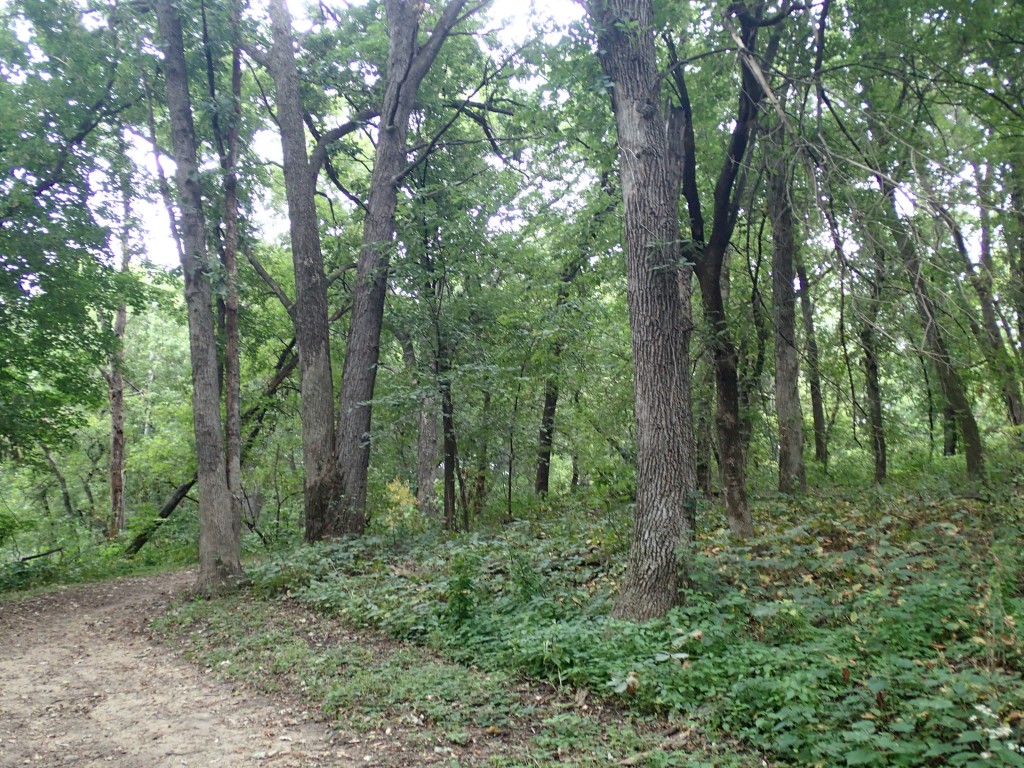
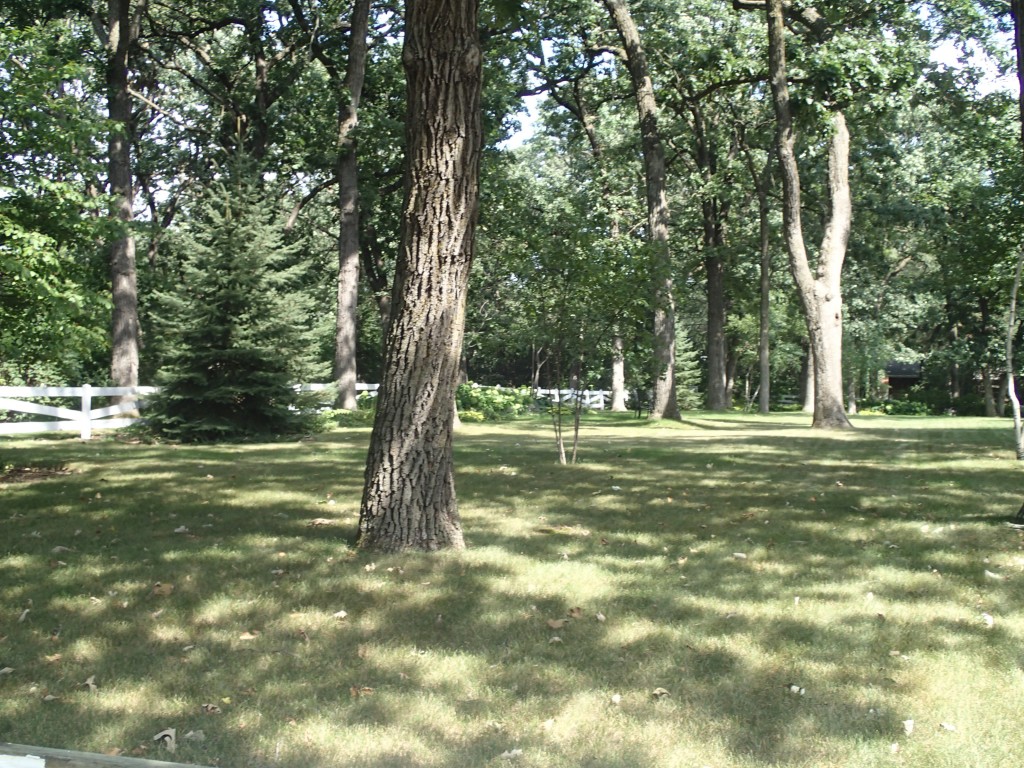
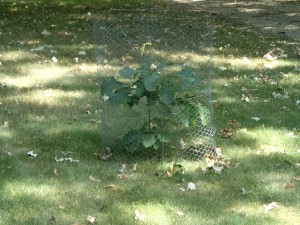
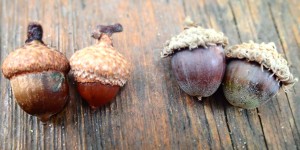
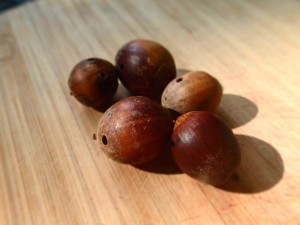
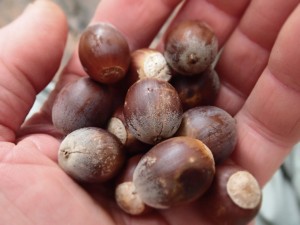
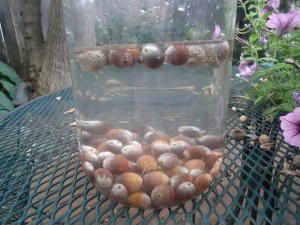
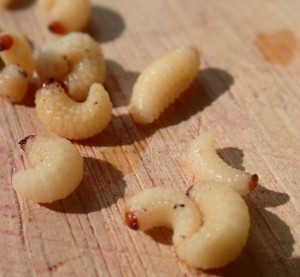
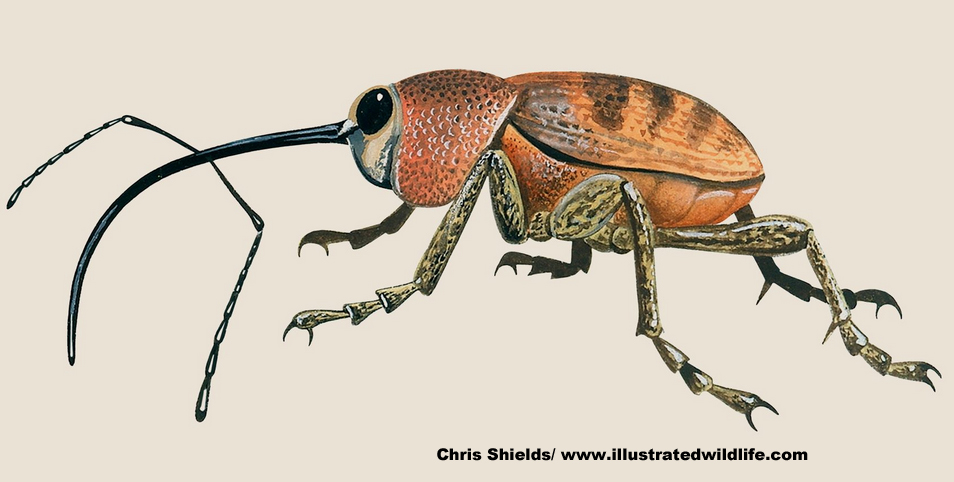




Larry, that felt like we were having a conversation while sitting in your yard. You always have something for me to learn. Thank you.
Great article–thanks!
I have said this before but it bears repeating : For Larry W. – – – Thank you, once again for your diligence in keeping the nearby neighborhood park strong and healthy. The hard work of removing buckthorn, keeping up with pulling garlic mustard and general upkeep of the park that so many of the neighbors utilize for walks and appreciating nature.You have always gone beyond what is required for the survival of this beautiful area that we are so lucky to live in.
Thank you for planting Oaks. I have been working in Illinois for the last few years in the late Summer, and have collected a few acorns from Bur Oaks in Monticello, Ill, and planted them at my home in Medina, NY (near Lake Ontario). I now have 5 Bur Oaks that are between 2-6 ft tall and look great. Now for the last two years I have collected grocery sacks full of acorns and dogwood seeds and have planted them around the the Oak Orchard River that runs through our villiage. Very few oaks there nowadays, but many of my acorns have come up and are 1-2 years old. I will do this every year from now on. The woods around my home are mostly new generation growth, as fields are abandoned, and left to their own devices. I figure a little help from me couldn’t hurt. These woods are mostly ash, which are just now beginning to die from the Emerald Ash Borer.
In keeping with Larry’s very inspiring words is this link to a lovely story of how an oak savanna can be combined with permaculture and agriculture for the health of the land. The author, Dennis Keeney, of Ames, is an emeritus professor at Iowa State University and the first director of the Leopold Center for Sustainable Agriculture. He’s been fighting to bring sanity back to agriculture.
http://amestrib.com/sections/opinion/columns/dennis-keeney-wedding-on-the-midwestern-savanna.html
As always , I am amazed at how much Mr. Wade knows about where and what we live in as far as nature is concerned. All I have seen and read about on his site is very informative. Many thanks to you Larry !
Just wanted to encourage your readers to watch the charming animated masterpiece Utube movie you mentioned in your blog, The Man Who Planted Trees . It is so timely, so full of hope and would be a wonderful thing to share with a young or old friend.
Also, it won the Acadamy Award for Best Animated Short Film and Short Film Palme d’Or in 1987. Deservedly so. Such a treat for the heart & mind!
Thanks!! As a kid I always wondered about those little white worm things that were in some acorns. Since we didn’t have internet in those days I wasn’t able to go online and learn so I chose to just wonder about it. After reading your blog above I found out the name of that critter & decided to go on-line to find out how it got in that acorn, why it was there and how it got out! Here are two great websites with the info:
This Iowa State U Extension News has an excellent & short article:
http://www.extension.iastate.edu/news/2007/sep/072107.htm
This National Geographic shows a short entertaining video:
http://video.nationalgeographic.com/video/animals/bugs-animals/beetles/weevil_acorn/
Thanks again your informative blog that gave me the name of that critter!